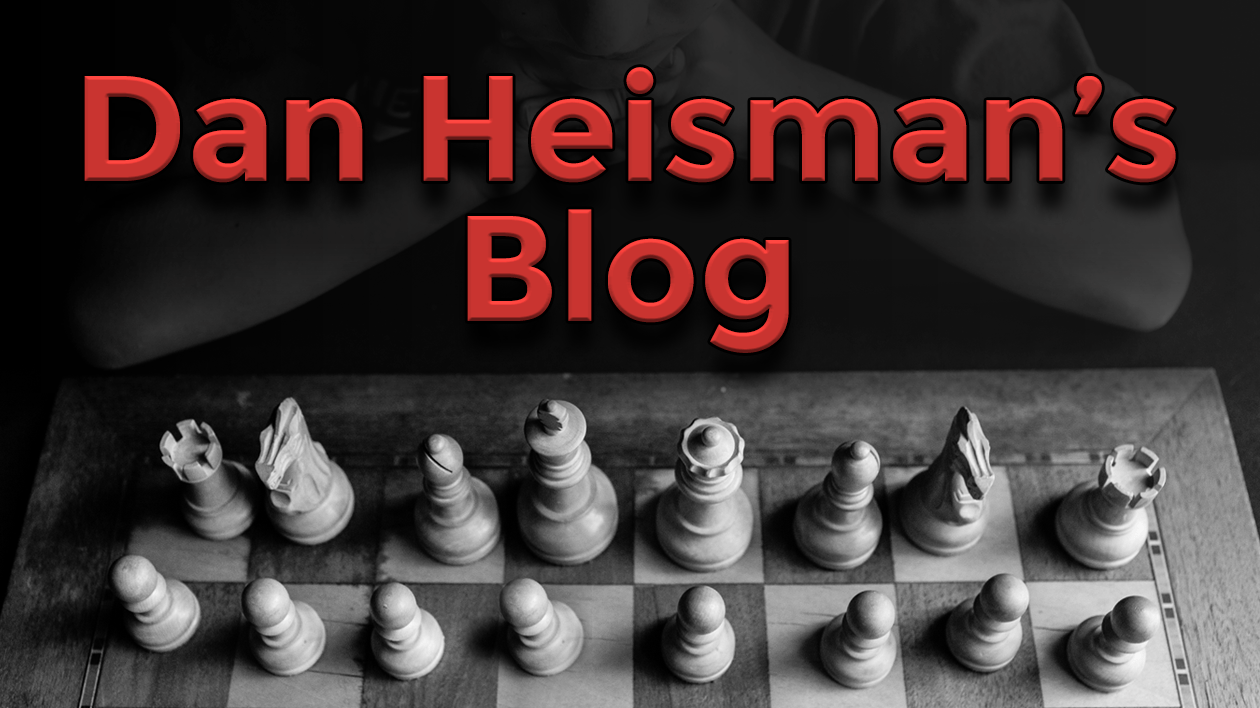
The Greatly Misunderstood and Potentially Challenging Tactic "Counting"
When I coined the term "Counting", many thought I was simply referring to knowing the value of the pieces, but that's just a minor aspect. By Counting I meant determining whether any sequence of exchanges led to gain or loss of material on any square. This not only included knowing the average value of the pieces, but subsumed many other well known ideas such as en prise, number of attackers and defenders, and desperado.
Counting problems can be as easy as en prise but can also be so difficult that it would take a computer to solve - the permutations of captures, especially when multiple squares are involved, often becomes enormous.
A few years ago, after my book "Back to Basics: Tactics" was first published, I received an email from a player rated 1600 USCF. He wrote that I did not know him, but he had bought that book to brush up on his tactics. He said that when he saw the title of the first chapter, "Safety and Counting", he skipped it, figuring he already knew that stuff.
However, he decided to do the problems at the end of the chapter. In the email he continued: "Imagine my shock when I got the first six problems wrong! I went back and read the chapter and realized you were discussing an aspect of tactics I had never seen in detail in any other tactics book." He urged me to let the average tournament player know that this was important material and they needed to study and understand it. I replied by thanking him, but thought that if I said that (as I am doing here  ), people would just figure that I was trying to sell my book, so it would be more effective if people like him told their friends!
), people would just figure that I was trying to sell my book, so it would be more effective if people like him told their friends!
I have two videos online on Counting and one on counting material during trades (those "counting" ideas are different!) on my Youtube Channel:
- Learn Chess - The Common, Important & Not-So-Easy Tactic "Counting"
- Improve Your Chess: The Counting Tactic - Back to Basics
- Improve Your Chess: Counting Material During Trades - 3 Methods
Let's consider a couple of Counting problems, the first one a fairly easy two-parter and second fairly difficult:
Part 1a: Is 7.d4 safe? (click on 6...Bc5) [Note: "safe" means your opponent has no forced sequence of moves in reply that win material or checkmate]:
This should be easy if you just address the Counting aspects. The answer is yes, since the knight on c6 is pinned, e.g. 7...exd4 8.Nxd4 Bxd4 9.Qxd4 and White is in no danger of losing material.
1b) Suppose after 7.d4 Black counterattacks the bishop on b5 with 7...a6. Is that safe?
The answer is no - this is a straightforward multiple-square Counting sequence involving c6 and c5, respectively. If White finds the capturing sequences 8.Bxc6+ bxc6 9.dxc5 then he wins a piece. You might laugh that this is easy, but the player who was Black in this game was a decent intermediate player and, after he miscalculated and played 7...a6??, he asked me to show everyone his mistake so that they would understand and have less chance of making a similar one. Note that this error cannot be classified as anything else; I even went out of my way to get the blessing of the good doctor GM John Nunn for calling this tactic Counting.
Now let's consider a more difficult question - one I needed a computer to verify the correct answer. In the following position White, in danger, desperately sacrificed 1.Nxe6. What should Black play in reply to maximize his material winnings?
This is not so easy. Black has an array of plausible moves such as 1...fxe6, 1...Nxf1, 1...Nxc4, 1...Rc8, and maybe even 1...b5. Did you consider all of them? Because if you just chose one that was good for Black, but overlooked one that was possibly much better, that can greatly affect your chances of winning. In computer evaluation parlance, it is much easier to win a game where you are +2.5 than it is to win a game where you are +1.5 (see the video "The Margin for Error")
I'm a master but it would be very difficult to prove what the right move is in this problem without a computer. However, with the help of Houdini 2, I can list the top four moves for Black, at 26+ ply:
- 1...Rc8 (-1.65; i.e. Black has the equivalent of a 1.65 pawn advantage)
- 1...fxe6 (-1.09)
- 1...b5 (-1.07)
- 1...Nxc4 (-0.83)
The good news is that in this particular case, you can't go far wrong with any of these, but getting that extra half pawn by picking 1...Rc8 could be huge. In many complex Counting positions the difference between the best move and the second best is MUCH greater, and it's easy to make mistakes in these types of positions. If you want more examples, easy! See the links above or get my book (latest printing 2018 or later are the ones you want). ![]()
I once had a new student, who began his first lesson with the fair question "What are you going to do to make me a better player?"
My reply was "I don't know yet - I have not diagnosed your strengths and weaknesses. However, judging from your rating [it was low] I would bet that I can help you make less Counting errors."
His immediate reply "I never make Counting errors!"
So we looked at two of his games. In one of his games he was White and had a pawn on a3 guarded by another pawn on b2. But he played 1.b3, in effect removing his own guard, allowing the en prise a-pawn to be captured with 1...Bxa3. When I asked what type of mistake it was, he said it was a blunder. I replied that he was correct in that a blunder is a bad move, but did he know how to classify what type of tactic that allowed? He said he did not. I informed him that it was a Counting error since he previously had one defender to the one attacker but, after his move, there was still an attacker but he had zero defenders (en prise). So that was a Counting error (or I guess you could also classify it as "self removal of the guard" which in this case creates a Counting error). His reply, "Oh! So that's what you mean by Counting!"  His other game included a Counting error, too.
His other game included a Counting error, too.
One of my few crusades in chess is to let everyone know what Counting is and why it is so prevalent and important. Watch any two absolute beginners playing each other and they will make moves which are trivial Counting errors. For example they often allow the Counting error where one of his/her piece is attacked twice and only guarded once (yes I know that doesn't always mean it isn't safe, but it often does) and can lose material to capture, capture, capture - and then opponent often misses it! They will make this type of Counting mistake far more often than they will miss a pin or a removal of a guard - not even close!
I strongly believe Counting needs to be taught after the rules and the average values of the pieces, but before multiple square motifs like pins and removal of the guard. See the basic Counting problems on pages 43-47 of my book Everyone's Second Chess Book as an example of what you can show any newcomer to teach them how to Count to see if a move is safe.
Finally, there's a difference between Counting and "just" keeping track of material as part of a trading sequence. Hopefully it will not surprise you that I have an article on different methods you can do to perform the latter at Counting Material. Even my intermediate students sometimes have difficulty keeping track of material during a series of trades. This difficulty may be due to either visualization errors or forgetting which pieces were captured, but the effect of an error when doing so can be disastrous, since which side is ahead in material - and how much - is a paramount evaluation issue. Keeping track of material as it is traded is a different problem than Counting, but surely an important and related cousin.






